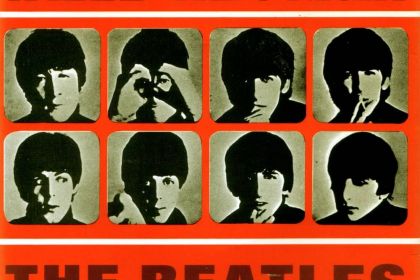Music Theory
Phrygian mode in Pink Floyd songs

Pink Floyd's Masters Of Rock LP cover
It is widely accepted that the Western system of seven diatonic modes, as postulated by the tonal theory, provides one of the most convenient toolkits for songwriting with an emphasis on the harmonic interaction between melody and chord accompaniment. Songs composed with this classical technique are easy to process and retain which ultimately contributes to their long-term popularity.
The chord progressions consistent with the tonal theory create and then resolve harmonic tensions thereby generating a particular aesthetic sensibility that is often enhanced by the lyrical component.
Pink Floyd's musical output is a prime example of how the tonal theory may affect the popularity of a particular album. Our analysis has shown that their early albums rarely contain classically oriented songs, whereas 70% of the tracks on the iconic The Dark Side of the Moon and The Wall follow tonal theory. This rate is also substantial for Wish You Were Here and The Final Cut whose percentage reaches 60% and 100% respectively.
This article analyzes all three Pink Floyd songs containing chord progressions composed in the Phrygian mode which, together with Aeolian and Dorian, belong to the group of minor diatonic modes. For a more detailed analysis of the Phrygian mode read our article on popular songs featuring Phrygian mode and Neapolitan chord.
Pink Floyd's first usage of the Phrygian chord progression can be seen in Cymbaline released on the 1969 album More. In the harmonic analysis of the song's chord chains, the scale degrees (denoted with Roman numerals) show the following progressions composed in both the Aeolian and Phrygian modes:
- Em–D or i–VII in E Aeolian for the intro;
- Am–Bm or iv–v in E Aeolian for the verses;
- C–F–C–F–Em or VI–II–VI–II–i in E Phrygian for the choruses.
Here the two musical modes are alternated in different song sections—a technique regularly used by songwriters to create a distinct harmonic contrast within a single piece.
The primary key of E minor appears in the intro's looping sequence of the Em tonic and the D subtonic chords. A two-chord combination involving the Am subdominant and the Bm dominant triad appears in the verses. This alternation creates an expectation of the Em tonic chord at the beginning of the upcoming section. However, instead of the tonic triad, the chorus opens with the C submediant chord rooted in the sixth scale degree, thus forming the v–VI musical turnaround known as the deceptive cadence.
The F major supertonic chord following the C submedian triad switches the musical mode from Aeolian to Phrygian and then the progression itself leads to the II–i essential Phrygian cadence. The supertonic F chord built on the second degree of the Phrygian scale is the highlight of the mode and is often referred to as the Neapolitan chord.
Listen to Cymbaline by Pink Floyd:
The Phrygian makes its second appearance in the epic Atom Heart Mother Suite released by the band in 1969. The score and orchestration of this classically shaped track were composed by Ron Geesin who helped embody some of Pink Floyd's melodic ideas into a more developed musical form. This collaboration with the classical composer took the band to a completely new level of songwriting, and the number of tracks using tonal theory would increase dramatically from that moment.
Distinct Phrygian progressions accompany the main theme of the Atom Heart Mother Suite. The most memorable melodic part of the track is alternately performed by brass, keyboards, electric guitar, and chorus in different sections of the composition. The main theme appears at 1:25, 2:21, 14:57, 19:13, and 22:44 with the following chord progressions in E Phrygian:
- Em–G–F–C or i–III–II–VI;
- Em–G–F–C or i–III–II–VI;
- Em–G–A–B or i–III–IV–V;
- Em–G–F–F or i–III–II–II.
Note that the F major Neapolitan chord appears in all progressions except the third line, where the two chords A and B do not belong to the Phrygian mode. Moreover, the third chord chain cannot be fully explained by the tonal theory since no diatonic mode can contain three major chords whose roots are of adjacent scale degrees.
Listen to Atom Heart Mother Suite by Pink Floyd:
The next time we see the Phrygian mode in the band's output is in certain sections of Hey You which opens the third side of their 1979 album The Wall. Here, the two-chord Phrygian progression accompanies the intro and bass solo appearing at 3:23: Emadd9–Dm or iadd9–vii. Indeed, of all the diatonic modes, only Phrygian contains minor chords rooted in the first and seventh scale degrees.
The song verses are composed in E Aeolian with the following progressions:
- Emadd9–Bm or iadd9–v;
- Emadd9–Bm or iadd9–v;
- D–G–D–C or VII–III–VII–VI;
- Bm–Am–Em or v–iv–i.
A good example of harmonic contrast is revealed by the third progression consisting of only major chords, setting it apart from the completely minor narrative. Similar contrasting techniques are constantly used by classical composers precisely in the third phrases of musical periods and binary forms.
In the guitar solo, the Em–Am alternation of tonic and subdominant chords can be classified as both Phrygian and Aeolian progression since both modes contain minor triads rooted in the first and fourth scale degrees.
Listen to Hey You by Pink Floyd:
Discover more songs composed in Phrygian minor mode and check out their harmonic analysis in the following articles:
- Popular songs featuring Phrygian mode and Neapolitan chord
- Dorian mode in Led Zeppelin songs
- Things We Said Today: the only Beatles song featuring Phrygian mode
- No Quarter: two minor modal modes of Led Zeppelin's psychedelic track
- Burbujas de Amor: playful and saucy lyrics by Juan Luis Guerra
- The Andalusian cadence: distinct chord progression of flamenco that captivated all pop music genres




I think Set the Controls for the Heart of the Sun is in E Phrygian with some sections in A Phrygian.
it is written entirely in the key of A minor (Aeolian) as it is accompanied by five chords: Am, G, Dm, C, F